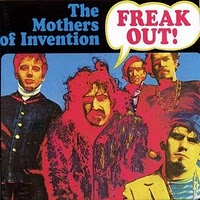 This is a true album for freaks. Back in 1967, Zappa must have felt left out of the hippy dippy counterculture because his musical interests seemed to extend beyond flowers in your hair, acoustic guitars and sitting barefoot in the park. So with this debut he in turn created a counterculture to the counterculture – an album for all the freaks and “left behinds” as he refers to them in the opening track Hungry Freaks Daddy. The music is frequently upbeat, jazzy and conventional, at least by Zappa’s standards. He had not yet started his long guitar explorations of later albums, and the only real “surreal” tracks are Who Are The Brain Police?, Help I’m A Rock, and the truly whacked out closer The Return Of The Son Of Monster Magnet. It’s these more experimental tracks that most intrigue me just in their sheer ludicrousness. They all sound like drug induced paranoia with their screaming, sound effects and seemingly made up language. –Neal
This is a true album for freaks. Back in 1967, Zappa must have felt left out of the hippy dippy counterculture because his musical interests seemed to extend beyond flowers in your hair, acoustic guitars and sitting barefoot in the park. So with this debut he in turn created a counterculture to the counterculture – an album for all the freaks and “left behinds” as he refers to them in the opening track Hungry Freaks Daddy. The music is frequently upbeat, jazzy and conventional, at least by Zappa’s standards. He had not yet started his long guitar explorations of later albums, and the only real “surreal” tracks are Who Are The Brain Police?, Help I’m A Rock, and the truly whacked out closer The Return Of The Son Of Monster Magnet. It’s these more experimental tracks that most intrigue me just in their sheer ludicrousness. They all sound like drug induced paranoia with their screaming, sound effects and seemingly made up language. –Neal
Album Reviews
Caravan “In the Land of Grey and Pink” (1971)
Caravan turned in a classic with 1971’s “In the Land of Grey and Pink,” with their insistent grooves, tongue-in-cheek lyrics with a uniquely English bent, and Richard Sinclair’s expansive, jazzy organ solos, this album largely set the template for the Canterbury sound. Caravan’s penchant for a whimsical, nodding bounce combined with a strong melodic hook is featured on “Golf Girl,” “Love to Love You (And Tonight Pigs Will Fly),” and the driving title track and reaches a peak on “Winter Wine,” as the band turns in a darker hued, intricate track featuring fantasy imagery. “Winter Wine” foreshadows the album’s pièce de résistance, “Nine Feet Underground,” a meandering multi-part suite that features some killer instrumental excursions coupled with some of the album’s most ingratiating melodies. –Ben
Stevie Wonder “Innervisions” (1973)
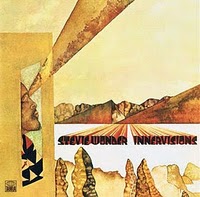 There is absolutely nothing like it. I could spend the entire review spouting off fawning superlatives, but suffice to say this is my favorite album of the 70’s, and my favorite non-jazz album of all time. From the opening chords, Stevie envelops you in a new type of funk; dark, complex and intense. “Too High”, “Higher Ground” and especially “Jesus Children of America” exemplify this sound, and they are what immediately grab you about the album. There is also gorgeous, emotional soul (“Golden Lady”, “All in Love is Fair”) and one track that lies in between (“Living for the City”). “Visions” is perhaps the most startling song, however. It isn’t really soul at all, and it’s definitely not funk. It’s a haunting and heart-felt meditation on the blindness of hatred that metiphorically contrasts it with Stevie’s own sightlessness. Just writing about this album gives me goosebumps, and if you’ve never heard it, you need to get on that, right now. –Lucas
There is absolutely nothing like it. I could spend the entire review spouting off fawning superlatives, but suffice to say this is my favorite album of the 70’s, and my favorite non-jazz album of all time. From the opening chords, Stevie envelops you in a new type of funk; dark, complex and intense. “Too High”, “Higher Ground” and especially “Jesus Children of America” exemplify this sound, and they are what immediately grab you about the album. There is also gorgeous, emotional soul (“Golden Lady”, “All in Love is Fair”) and one track that lies in between (“Living for the City”). “Visions” is perhaps the most startling song, however. It isn’t really soul at all, and it’s definitely not funk. It’s a haunting and heart-felt meditation on the blindness of hatred that metiphorically contrasts it with Stevie’s own sightlessness. Just writing about this album gives me goosebumps, and if you’ve never heard it, you need to get on that, right now. –Lucas
Prefab Sprout “Steve McQueen” (1985)
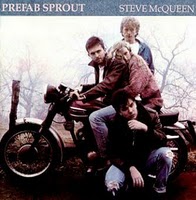 Saying Steve McQueen is easy listening, is like saying Twin Peaks was a soap opera. At first glance both statements seem true, yet both works have a way of distorting such unattractive mediums so much that it becomes something so different that could never be replicated again. Now Steven McQueen doesn’t have scary synths or a lady carrying logs narrating, so I’m going to kill that comparison now. Song by song, I have heard very few albums that measure up as well as Prefab Sprout’s crowning achievement. Listening over and over (sometimes five times in a row), I just start picking out individual moments in a song that add so much more charm and mystery to the bigger picture. Paddy McAloon has one of the best vocals in music, and just had the essence of someone you want to follow or know about simply through the power of his performance. Every song on here comes so close to the line between heartbreak and recovery, that they all capture the essence of both and never fail to move me. It’s something truly special and one of the greatest albums ever. Like at the end of The Great Escape when Steven McQueen is out running the germans on his motorcycle. He sadly flips out and ends up where he began, back in the camp. He didn’t succeed but he’s happy. Why? Because he’s Steve McQueen and that’s a bad mother fucker. –Allistair
Saying Steve McQueen is easy listening, is like saying Twin Peaks was a soap opera. At first glance both statements seem true, yet both works have a way of distorting such unattractive mediums so much that it becomes something so different that could never be replicated again. Now Steven McQueen doesn’t have scary synths or a lady carrying logs narrating, so I’m going to kill that comparison now. Song by song, I have heard very few albums that measure up as well as Prefab Sprout’s crowning achievement. Listening over and over (sometimes five times in a row), I just start picking out individual moments in a song that add so much more charm and mystery to the bigger picture. Paddy McAloon has one of the best vocals in music, and just had the essence of someone you want to follow or know about simply through the power of his performance. Every song on here comes so close to the line between heartbreak and recovery, that they all capture the essence of both and never fail to move me. It’s something truly special and one of the greatest albums ever. Like at the end of The Great Escape when Steven McQueen is out running the germans on his motorcycle. He sadly flips out and ends up where he began, back in the camp. He didn’t succeed but he’s happy. Why? Because he’s Steve McQueen and that’s a bad mother fucker. –Allistair
Jaco Pastorius “Jaco Pastorius” (1976)
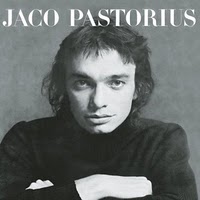 To say that Jaco Pastorius lived a tumultuous life filled with incredible highs and lows would be an understatement. Cursed with mental illness and drug and alcohol problems, his life came crashing down to a violent end in 1987 after an altercation with a bouncer outside of a Florida club. I’m actually stunned just reading about this incident. The bouncer in question only received four months in prison for essentially beating a man to death. But I guess we don’t know the whole story. I hadn’t heard bass playing quite like the way Pastorius played it before I’d heard him play on Weather Report and Pat Metheny albums. He really could make the bass “sing” and sound divine. This debut solo record highlights these qualities with fast flashy playing alternating with slow contemplative passages. Pastorius had his musical roots in R&B, so the inclusion of Sam and Dave’s vocals on the funky “Come On, Come Over” is something of an homage to these roots. Another interesting highlight are the steel drums on “Opus Pocus”, which really add texture to the song. Overall, this album is a must for jazz and fusion fans, as well as a necessary lesson for electric bass students. –Neal
To say that Jaco Pastorius lived a tumultuous life filled with incredible highs and lows would be an understatement. Cursed with mental illness and drug and alcohol problems, his life came crashing down to a violent end in 1987 after an altercation with a bouncer outside of a Florida club. I’m actually stunned just reading about this incident. The bouncer in question only received four months in prison for essentially beating a man to death. But I guess we don’t know the whole story. I hadn’t heard bass playing quite like the way Pastorius played it before I’d heard him play on Weather Report and Pat Metheny albums. He really could make the bass “sing” and sound divine. This debut solo record highlights these qualities with fast flashy playing alternating with slow contemplative passages. Pastorius had his musical roots in R&B, so the inclusion of Sam and Dave’s vocals on the funky “Come On, Come Over” is something of an homage to these roots. Another interesting highlight are the steel drums on “Opus Pocus”, which really add texture to the song. Overall, this album is a must for jazz and fusion fans, as well as a necessary lesson for electric bass students. –Neal
Earth, Wind & Fire “Earth, Wind & Fire” (1971)
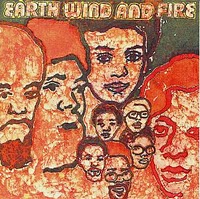 I couldn’t believe my ears when I heard this debut because it couldn’t be further from the glossy disco I was used to associating with the group. Instead it is a bare bones, no nonsense funky affair not unlike early Tower of Power or Sly and the Family Stone. There are also nods to rock in the tough drumming, and jazz fusion on the weirdly titled closer “Bad Tune”. The peace and love lyrics get kind of grating, as does the “banter” in between songs, but these are small grievances on an otherwise still fresh sounding album. –Neal
I couldn’t believe my ears when I heard this debut because it couldn’t be further from the glossy disco I was used to associating with the group. Instead it is a bare bones, no nonsense funky affair not unlike early Tower of Power or Sly and the Family Stone. There are also nods to rock in the tough drumming, and jazz fusion on the weirdly titled closer “Bad Tune”. The peace and love lyrics get kind of grating, as does the “banter” in between songs, but these are small grievances on an otherwise still fresh sounding album. –Neal
Incredible String Band “The Hangman’s Beautiful Daughter” (1968)
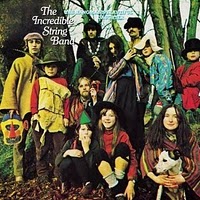 The Hangman’s Beautiful Daughter. Where to start? The lyrics are full of imagination, but almost devoid of sense. In that respect, this is almost the ultimate psychedelic album. Though Heron and Williamson lack the lyricism of Dylan, they come up with some nice music. “Koeeoaddi There” starts the album in classic psychedelic style. There aren’t two related sentences there. Sometimes there aren’t even two related clauses within a sentence. It all becomes too much when Williamson sings ‘Ladybird, ladybird, what is your wish? Your wish is not granted unless it’s a fish’. This is followed by the equally weird “The Minotaur’s Song” which is sung in the style of a Gilbert and Sullivan operetta. The classic line this time: ‘I can’t dream well because of my horns’. The best song is “A Very Cellular Song”. Even this is best appreciated with an unnaturally open mind. It starts off in sort of hazy fairground style, then breaks into a touching spiritual. This is followed by what I can best describe as spoof-baroque. Next is some kind of folk interlude, before the spoof-baroque resumes. The music then takes the back seat as some strange lyrics about slithering and squelching take the foreground. The final section sees a return to fairground music accompanying some mystical mantra or something. Remarkable, but totally bizarre. –Jim
The Hangman’s Beautiful Daughter. Where to start? The lyrics are full of imagination, but almost devoid of sense. In that respect, this is almost the ultimate psychedelic album. Though Heron and Williamson lack the lyricism of Dylan, they come up with some nice music. “Koeeoaddi There” starts the album in classic psychedelic style. There aren’t two related sentences there. Sometimes there aren’t even two related clauses within a sentence. It all becomes too much when Williamson sings ‘Ladybird, ladybird, what is your wish? Your wish is not granted unless it’s a fish’. This is followed by the equally weird “The Minotaur’s Song” which is sung in the style of a Gilbert and Sullivan operetta. The classic line this time: ‘I can’t dream well because of my horns’. The best song is “A Very Cellular Song”. Even this is best appreciated with an unnaturally open mind. It starts off in sort of hazy fairground style, then breaks into a touching spiritual. This is followed by what I can best describe as spoof-baroque. Next is some kind of folk interlude, before the spoof-baroque resumes. The music then takes the back seat as some strange lyrics about slithering and squelching take the foreground. The final section sees a return to fairground music accompanying some mystical mantra or something. Remarkable, but totally bizarre. –Jim
Nektar “Down to Earth” (1974)
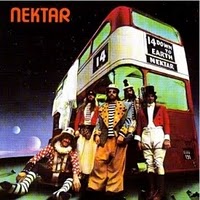 Temporarily abandoning the extended suite forms of their previous releases, Nektar turn in an accessible, almost pop-flavored collection of shorter songs with Down To Earth. Although it orbits in a sort of Euro-hippie galaxy, and features a vague circus concept running throughout, don’t let that scare you away, as this is a focused album with consistently strong songs. My favorites include the giant-sized “Nelly The Elephant,” (which sounds more than a little like part of Pink Floyd’s “Echoes”), animated “That’s Life,” expressive ballad “Little Boy,” and insistent “Show Me The Way,” but even the lesser stuff is pretty great. A refreshing, successful departure from the norm for Nektar. –Ben
Temporarily abandoning the extended suite forms of their previous releases, Nektar turn in an accessible, almost pop-flavored collection of shorter songs with Down To Earth. Although it orbits in a sort of Euro-hippie galaxy, and features a vague circus concept running throughout, don’t let that scare you away, as this is a focused album with consistently strong songs. My favorites include the giant-sized “Nelly The Elephant,” (which sounds more than a little like part of Pink Floyd’s “Echoes”), animated “That’s Life,” expressive ballad “Little Boy,” and insistent “Show Me The Way,” but even the lesser stuff is pretty great. A refreshing, successful departure from the norm for Nektar. –Ben
Metallica “Kill ‘Em All” (1983)
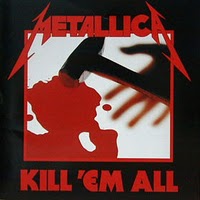 The blood soaked hammer that adorns Metallica’s debut serves as an ample warning to those who would drop the needle on this violent platter, as the Bay Area ‘bangers cut loose throughout Kill ’em All, barking with fury as every track is sent into the red with unrestrained aggression. This is the sound of metal-obsessed fans stripping away the fat and then dishing out the lean leftovers with a new, ultra-heavy direction, Kill ’em All serving as a statement of dedication to the denim ‘n’ leather lifestyle, alone in service to the almighty riff. Adrenaline pumping rallying cries to the metal masses like “Whiplash,” “Hit the Lights,” and “Motorbreath” are delivered at breakneck speed, while Metallica rides crushing grooves on tunes like “The Four Horsemen” and “Seek and Destroy.” Although the band pushes the sound of their NWoBHM influences to it’s extreme, the fact that they have the skill and smarts to adopt the catchiness that ran through those imported sides is one of the key factors that elevates Kill ’em All to it’s lofty position. –Ben
The blood soaked hammer that adorns Metallica’s debut serves as an ample warning to those who would drop the needle on this violent platter, as the Bay Area ‘bangers cut loose throughout Kill ’em All, barking with fury as every track is sent into the red with unrestrained aggression. This is the sound of metal-obsessed fans stripping away the fat and then dishing out the lean leftovers with a new, ultra-heavy direction, Kill ’em All serving as a statement of dedication to the denim ‘n’ leather lifestyle, alone in service to the almighty riff. Adrenaline pumping rallying cries to the metal masses like “Whiplash,” “Hit the Lights,” and “Motorbreath” are delivered at breakneck speed, while Metallica rides crushing grooves on tunes like “The Four Horsemen” and “Seek and Destroy.” Although the band pushes the sound of their NWoBHM influences to it’s extreme, the fact that they have the skill and smarts to adopt the catchiness that ran through those imported sides is one of the key factors that elevates Kill ’em All to it’s lofty position. –Ben
Andrew Hill “Black Fire” (1964)
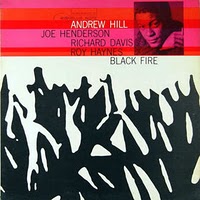 Almost from the beginning, Andrew Hill has been a driving force of avant-garde jazz. To this very day he’s still at it, having won a best album award for Dusk in the year 2000 and multiple Best Jazz Composer awards recently. While Hill set the standard for all avant-garde jazz with the release of Point of Departure, Black Fire was his first masterpiece. He didn’t create the genre but he has certainly almost carried it on his back. This album features what may be my favorite quartet as of yet: Andrew Hill, Richard Davis, Roy Haynes and Joe Henderson. Hill’s style is hard to pinpoint. It’s sort of a cross of Bill Evans and Thelonious Monk, varying from classy to erratic. Joe Henderson had just gotten out of the military when this was recorded. Black Fire definitely features some of his finest tenor saxophone work. On drums, Roy Haynes is, for lack of better description, the original Tony Williams. His versatility is awesome. From what I can tell, if a person wanted to record a slightly strange jazz album in the 60s, bearing in mind that they couldn’t get Charles Mingus, Richard Davis was the next logical selection. Ron Carter would be after Davis and then somebody random if all else failed. Two of the seven songs are piano/drums/bass numbers: “Subterfuge” and “Tired Trade”. “Subterfuge” is perhaps my favorite jazz trio song. Start to finish, “Pumpkin” to the avant-garde Latin feeling “Land of Nod”, this is a classic. –Rob
Almost from the beginning, Andrew Hill has been a driving force of avant-garde jazz. To this very day he’s still at it, having won a best album award for Dusk in the year 2000 and multiple Best Jazz Composer awards recently. While Hill set the standard for all avant-garde jazz with the release of Point of Departure, Black Fire was his first masterpiece. He didn’t create the genre but he has certainly almost carried it on his back. This album features what may be my favorite quartet as of yet: Andrew Hill, Richard Davis, Roy Haynes and Joe Henderson. Hill’s style is hard to pinpoint. It’s sort of a cross of Bill Evans and Thelonious Monk, varying from classy to erratic. Joe Henderson had just gotten out of the military when this was recorded. Black Fire definitely features some of his finest tenor saxophone work. On drums, Roy Haynes is, for lack of better description, the original Tony Williams. His versatility is awesome. From what I can tell, if a person wanted to record a slightly strange jazz album in the 60s, bearing in mind that they couldn’t get Charles Mingus, Richard Davis was the next logical selection. Ron Carter would be after Davis and then somebody random if all else failed. Two of the seven songs are piano/drums/bass numbers: “Subterfuge” and “Tired Trade”. “Subterfuge” is perhaps my favorite jazz trio song. Start to finish, “Pumpkin” to the avant-garde Latin feeling “Land of Nod”, this is a classic. –Rob
Queen “Queen II” (1974)
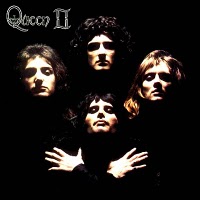 It’s a slightly awkward (and goofy) amalgam of Glam and Prog and Metal, but only slightly: the band catches fire and forges the core of their classic sound (in which Glam and Prog and Metal get along Famously) with this second release, a dense, majestic, and, of course, operatic sequence that inhabits a dark sound-world while delivering shimmering pop hooks aplenty. Gallivanting sword ’n’ sorcery themes alternate with classic r ’n’ r rebellion, and somehow it all works, even if I get the feeling that they could’ve developed some of these songs a little more. Incidentally, this also can be cited, for better or worse, as the origin of Smashing Pumpkins’ whole guitar sound and song dynamic (not to mention melodic sensibility) on their (his) early records—so fans of that stuff should look this up. Low on hits but stacked with impressive “deep cuts,” this is to my ears nearly as good as successors Sheer Heart Attack and A Night at the Opera; in fact, I find that I play this one more often than either—if only to hear tracks that never fail to surprise me in this album’s baffling yet strangely fluent sequencing (“White Queen,” “Some Day One Day,” and the Phil Spectral “Funny How Love Is”). –Will
It’s a slightly awkward (and goofy) amalgam of Glam and Prog and Metal, but only slightly: the band catches fire and forges the core of their classic sound (in which Glam and Prog and Metal get along Famously) with this second release, a dense, majestic, and, of course, operatic sequence that inhabits a dark sound-world while delivering shimmering pop hooks aplenty. Gallivanting sword ’n’ sorcery themes alternate with classic r ’n’ r rebellion, and somehow it all works, even if I get the feeling that they could’ve developed some of these songs a little more. Incidentally, this also can be cited, for better or worse, as the origin of Smashing Pumpkins’ whole guitar sound and song dynamic (not to mention melodic sensibility) on their (his) early records—so fans of that stuff should look this up. Low on hits but stacked with impressive “deep cuts,” this is to my ears nearly as good as successors Sheer Heart Attack and A Night at the Opera; in fact, I find that I play this one more often than either—if only to hear tracks that never fail to surprise me in this album’s baffling yet strangely fluent sequencing (“White Queen,” “Some Day One Day,” and the Phil Spectral “Funny How Love Is”). –Will
The Kinks “Arthur or the Decline and Fall of the British Empire” (1969)
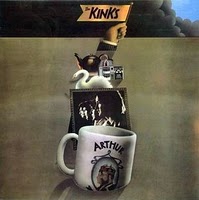 The freshness of a piece like “Shangri-La” is astonishing. It’s as relevant to middle-class values today as it was 40 years ago. “Brainwashed” continues the examination, which is completed by “Nothing To Say” taking a look from a completely different perspective. Brilliant! Individually most of the songs aren’t great. The exceptions are the brilliant “Victoria”, “Shangri-La” and “Young And Innocent Days”. But, put together the songs amount to another masterpiece from the Kinks. I don’t know of another lyricist who has achieved on one album of popular music what Ray Davies has achieved here – a complete social history of a particular era. –Jim
The freshness of a piece like “Shangri-La” is astonishing. It’s as relevant to middle-class values today as it was 40 years ago. “Brainwashed” continues the examination, which is completed by “Nothing To Say” taking a look from a completely different perspective. Brilliant! Individually most of the songs aren’t great. The exceptions are the brilliant “Victoria”, “Shangri-La” and “Young And Innocent Days”. But, put together the songs amount to another masterpiece from the Kinks. I don’t know of another lyricist who has achieved on one album of popular music what Ray Davies has achieved here – a complete social history of a particular era. –Jim


